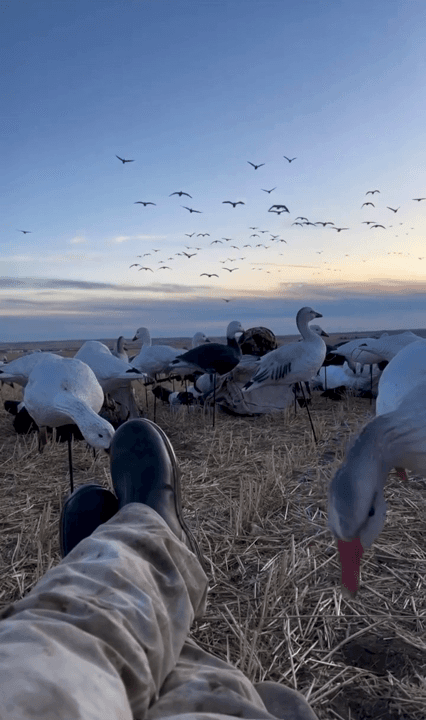
Goose hunting in Canada is a cherished tradition, deeply ingrained in the country's rich outdoor heritage. Hunters from across North America flock to the vast wetlands and open fields where geese migrate in impressive numbers. Canada is renowned for its diverse goose species, each offering unique hunting experiences. Here are types of geese that hunters pursue in Canada: 1. Canada Goose (Branta canadensis) Hunting Season : Typically runs from late summer to early winter, depending on the region. Hunters use decoys and calls to mimic their honking sounds, often setting up in open fields or near water bodies. 2. Snow Goose (Anser caerulescens) Hunting Season : Usually extends from fall through early spring. Need large numbers of decoys are essential due to their flocking behavior. Electronic callers are often used to mimic their high-pitched vocalizations. 3. Ross's Goose (Chen rossii) Hunting Season : Generally coincides with snow goose seasons. Often hunted alongside snow geese, using similar tactics such as large decoy spreads and electronic calls. 4. White-fronted Goose (Anser albifrons) Hunting Season : Fall to early winter. Hunters use realistic decoys and imitate their soft, rolling calls. Concealment is crucial due to their wariness. 5. Cackling Goose (Branta hutchinsii) Hunting Season : Overlaps with Canada goose seasons. Techniques similar to Canada goose hunting, but with smaller decoys and higher-pitched calls to match their distinct vocalizations. 6. Brant Goose (Branta bernicla) Hunting Season : Primarily in the fall and early winter. Hunting typically occurs in coastal areas, requiring specialized gear like boats and floating decoys. Calls are more subtle and low-pitched compared to other geese. The Canadian landscape offers an ideal setting for this pursuit, with its diverse habitats ranging from coastal marshes to inland prairies. Hunters prepare meticulously, scouting locations and setting up decoys to mimic the natural flight patterns of these birds. The sound of goose calls echoing through the misty mornings adds to the allure of the hunt. For many, goose hunting is more than just a sport; it's a way to connect with nature and preserve a longstanding cultural practice. It requires patience, skill, and respect for wildlife conservation. Hunters must adhere to strict regulations, including bag limits and seasonal restrictions, ensuring sustainable practices that protect goose populations for future. The camaraderie among hunters is another essential aspect of the experience. Friends gather around campfires, sharing stories and enjoying hearty meals after a long day in the field. Whether it's the thrill of a successful shot or the simple joy of being outdoors, goose hunting in Canada embodies a profound connection to the land and its traditions. In the end, goose hunting is a testament to the enduring bond between humans and the natural world, offering both adventure and a sense of continuity in a rapidly changing world.
Post: 31 January 05:47


